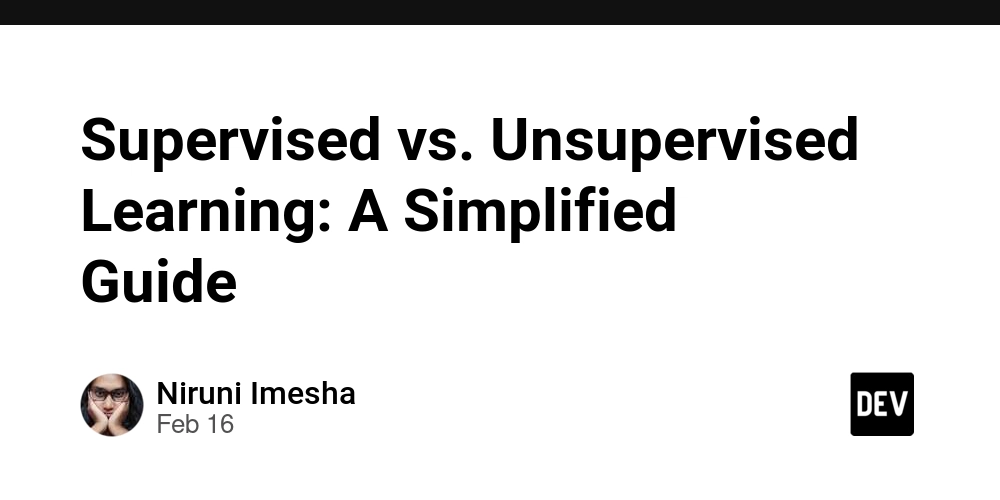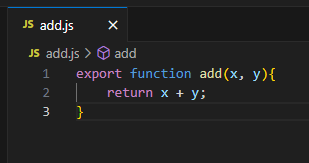Supervised vs. Unsupervised Learning: A Simplified Guide
What is Machine Learning? Imagine teaching a computer to recognize cats. You could show it thousands of cat pictures, pointing out the feline features. Eventually, the computer would learn to identify cats on its own. This is a simplified example of machine learning, a field of artificial intelligence that allows computers to learn from data without explicit programming. Supervised Learning: Learning with a Teacher In supervised learning, the computer is trained on a dataset with labeled examples. It's like a student learning under a teacher's guidance. For instance, to teach a computer to identify spam emails, you would feed it a dataset of emails labeled as "spam" or "not spam." The computer learns to distinguish between the two categories based on the patterns it identifies. Regression: Predicting numerical values (e.g., predicting house prices). Classification: Categorizing data into discrete classes (e.g., spam detection, image classification). Unsupervised Learning: Learning Without a Teacher In unsupervised learning, the computer explores unlabeled data to discover hidden patterns and structures. It's like a student learning without a teacher, figuring things out on their own. For example, to group customers based on their purchasing behavior, an unsupervised learning algorithm can analyze customer data without any predefined labels. Clustering: Grouping similar data points together (e.g., customer segmentation). Dimensionality Reduction: Simplifying complex data by reducing the number of features (e.g., PCA). Anomaly Detection: Identifying outliers or anomalies in data (e.g., fraud detection). Which one is better? The choice between supervised and unsupervised learning depends on the specific problem and the availability of labeled data. In many real-world scenarios, a combination of both approaches is often used to achieve optimal results. Real-world Applications Both supervised and unsupervised learning have numerous applications across various industries: Healthcare: Disease diagnosis, drug discovery Finance: Fraud detection, algorithmic trading Marketing: Customer segmentation, recommendation systems Image and Video Processing: Object recognition, facial recognition As machine learning continues to evolve, we can expect to see even more innovative and impactful applications in the years to come.

What is Machine Learning?
Imagine teaching a computer to recognize cats. You could show it thousands of cat pictures, pointing out the feline features. Eventually, the computer would learn to identify cats on its own. This is a simplified example of machine learning, a field of artificial intelligence that allows computers to learn from data without explicit programming.
Supervised Learning: Learning with a Teacher
In supervised learning, the computer is trained on a dataset with labeled examples. It's like a student learning under a teacher's guidance. For instance, to teach a computer to identify spam emails, you would feed it a dataset of emails labeled as "spam" or "not spam." The computer learns to distinguish between the two categories based on the patterns it identifies.
- Regression: Predicting numerical values (e.g., predicting house prices).
- Classification: Categorizing data into discrete classes (e.g., spam detection, image classification).
Unsupervised Learning: Learning Without a Teacher
In unsupervised learning, the computer explores unlabeled data to discover hidden patterns and structures. It's like a student learning without a teacher, figuring things out on their own. For example, to group customers based on their purchasing behavior, an unsupervised learning algorithm can analyze customer data without any predefined labels.
- Clustering: Grouping similar data points together (e.g., customer segmentation).
- Dimensionality Reduction: Simplifying complex data by reducing the number of features (e.g., PCA).
- Anomaly Detection: Identifying outliers or anomalies in data (e.g., fraud detection).
Which one is better?
The choice between supervised and unsupervised learning depends on the specific problem and the availability of labeled data. In many real-world scenarios, a combination of both approaches is often used to achieve optimal results.
Real-world Applications
Both supervised and unsupervised learning have numerous applications across various industries:
- Healthcare: Disease diagnosis, drug discovery
- Finance: Fraud detection, algorithmic trading
- Marketing: Customer segmentation, recommendation systems
- Image and Video Processing: Object recognition, facial recognition
As machine learning continues to evolve, we can expect to see even more innovative and impactful applications in the years to come.









































































































































































![[The AI Show Episode 142]: ChatGPT’s New Image Generator, Studio Ghibli Craze and Backlash, Gemini 2.5, OpenAI Academy, 4o Updates, Vibe Marketing & xAI Acquires X](https://www.marketingaiinstitute.com/hubfs/ep%20142%20cover.png)


























































































































![[FREE EBOOKS] The Kubernetes Bible, The Ultimate Linux Shell Scripting Guide & Four More Best Selling Titles](https://www.javacodegeeks.com/wp-content/uploads/2012/12/jcg-logo.jpg)



![From drop-out to software architect with Jason Lengstorf [Podcast #167]](https://cdn.hashnode.com/res/hashnode/image/upload/v1743796461357/f3d19cd7-e6f5-4d7c-8bfc-eb974bc8da68.png?#)







































































































.png?#)




.jpg?#)




















 (1).webp?#)











_Christophe_Coat_Alamy.jpg?#)








































































































![Rapidus in Talks With Apple as It Accelerates Toward 2nm Chip Production [Report]](https://www.iclarified.com/images/news/96937/96937/96937-640.jpg)








































































































































